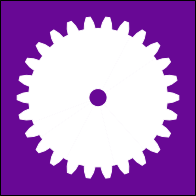 Another great evening at the Hackspace with a variety of projects being worked on. The Shrimp kits were being put together for the Brighton Maker Faire and the logistics of getting 30 Atmega328 ICs programmed with the bootloader and then a sketch were finalised. All looking good for the 7th September.
Another great evening at the Hackspace with a variety of projects being worked on. The Shrimp kits were being put together for the Brighton Maker Faire and the logistics of getting 30 Atmega328 ICs programmed with the bootloader and then a sketch were finalised. All looking good for the 7th September.
Projects being work on were:
- Paper mache mask with servo controlled eyes.
- Arduino distance sensor
- 3D cube building
- Adding additional inputs using resistors and analog in
- Minimal Arduino Shrimp built with no breadboard or stripboard, but with headers and including flashing LEDs. This is a work of art and should be get a lot of interest at the Maker Faire.
- And very excitingly the first spinning wheel at The Warehouse. It was amazing seeing balls of fibres turned into usable yarn.


There was also work done with the 3D tracking interface http://makezine.com/projects/a-touchless-3d-tracking-interface/ It’s a nice project to create a 3D interface using a few very simple components for the sensor (cardboard, tinfoil, shielded cable, and resistors), an Arduino and then a computer to display the results. The sensor was previously built by Robin and it looked great.
 We plugged it in and using the Arduino Serial Monitor could see the values change as we moved our hands around the space. Success!!!
We plugged it in and using the Arduino Serial Monitor could see the values change as we moved our hands around the space. Success!!!

 The computer code provided is using Processing on a 32 bit PC. Our goals is for this to run on a Raspberry Pi but Processing was very slow so an alternative system was needed. Python was the natural choice, so we started hacking together code using our best friend Google for assistance. Due to the different logic levels (3.3V on Raspberry Pi and 5V on Arduino) it was considered safest to use a USB serial adaptor. Installed python-serial to interface with the serial interface. Hacked some code together to read the serial data as a string, split it into a list for the X, Y and Z data feed and then convert those to Integers so they can be compared.
The computer code provided is using Processing on a 32 bit PC. Our goals is for this to run on a Raspberry Pi but Processing was very slow so an alternative system was needed. Python was the natural choice, so we started hacking together code using our best friend Google for assistance. Due to the different logic levels (3.3V on Raspberry Pi and 5V on Arduino) it was considered safest to use a USB serial adaptor. Installed python-serial to interface with the serial interface. Hacked some code together to read the serial data as a string, split it into a list for the X, Y and Z data feed and then convert those to Integers so they can be compared.
 Without modifying the Arduino code it looked like the Arduino was pumping out the data faster than the Raspberry Pi was reading it so we did not see the live changes and expect we would have had to wait a long time before we say anything other than the baseline data coming through. So, the work for next time is to code up some handshaking mechanism to only have the Arduino send data when the Raspberry Pi is ready to receive it thereby not filling the buffer, but still sending the latest data each time. So, another project that needs to be finished.
Without modifying the Arduino code it looked like the Arduino was pumping out the data faster than the Raspberry Pi was reading it so we did not see the live changes and expect we would have had to wait a long time before we say anything other than the baseline data coming through. So, the work for next time is to code up some handshaking mechanism to only have the Arduino send data when the Raspberry Pi is ready to receive it thereby not filling the buffer, but still sending the latest data each time. So, another project that needs to be finished.
